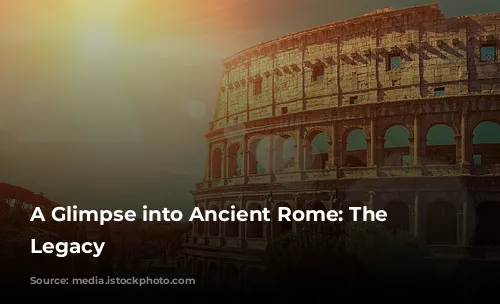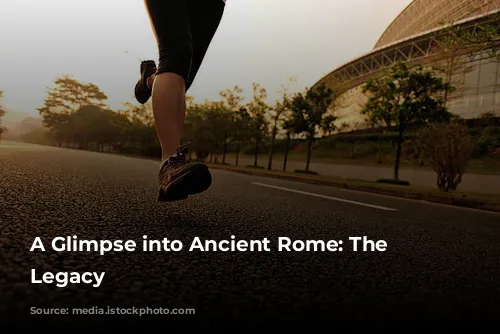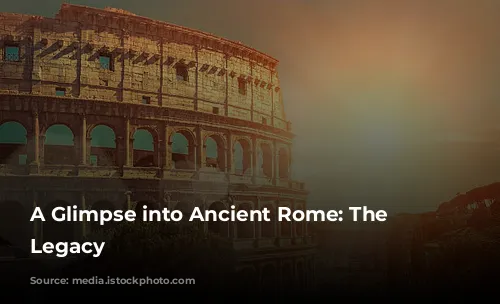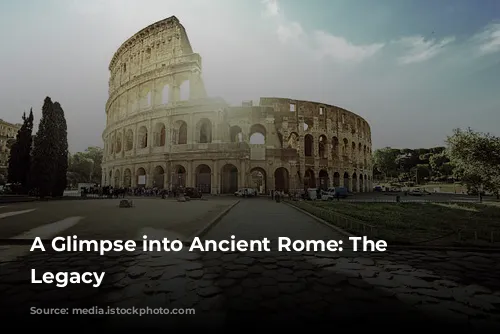The Colosseum, a majestic structure that has stood the test of time, serves as a powerful testament to the architectural genius of ancient Rome. This iconic landmark is not only a symbol of the Roman Empire’s might but also a major source of tourism revenue for the Italian government. In 2018 alone, the Colosseum, Roman Forum, and Palatine Hill collectively generated over $63.3 million (€53.8 million), solidifying their place as Italy’s highest-earning tourist attraction.
This paragraph explains the significance of the Colosseum, highlighting its historical and economic value.
A Monument Rescued from Neglect
The Colosseum’s journey through time has been marked by both glory and decay. After the fall of the Western Roman Empire, the monument fell into disrepair, becoming a target of opportunistic families who repurposed the arena as their fortress. In the late 15th century, the Colosseum was further desecrated when Pope Alexander VI allowed it to be used as a quarry. For over a thousand years, the Colosseum endured neglect and exploitation until state-funded restoration efforts were finally initiated in the 1990s.
This paragraph outlines the Colosseum’s decline and subsequent restoration, emphasizing the centuries of neglect and the eventual steps taken to preserve it.
From Imperial Vision to Public Spectacle
The Colosseum’s origins can be traced back to Emperor Vespasian’s ambition to revitalize Rome following the tumultuous year of the four emperors (69 CE). Like other amphitheaters of its time, the Colosseum was conceived as an entertainment venue designed to captivate the Roman masses. Gladiator fights, animal hunts, and even mock naval battles were among the spectacular events that thrilled audiences within the arena’s walls.
This paragraph delves into the Colosseum’s purpose, highlighting its intended role in providing entertainment for the Roman populace.
A Legacy of Blood and Stone
The construction of the Colosseum began under Vespasian’s rule between 70 and 72 CE. The structure was officially dedicated in 80 CE by Vespasian’s son and successor, Titus, with the fourth story being added by Emperor Domitian in 82 CE. The arena was financed with plunder obtained from Titus’s sack of Jerusalem in 70 CE, and its construction was carried out by enslaved Jews from Judaea, a stark reminder of the empire’s brutal power dynamics.
This paragraph focuses on the Colosseum’s construction, detailing the key figures involved and the tragic circumstances surrounding its funding.
An Architectural Marvel: The Colosseum’s Design
The Colosseum, also known as the Flavian Amphitheatre, is a grand elliptical structure constructed from stone, concrete, and tuff. Rising to four stories in height, the Colosseum is a monumental structure measuring 620 by 513 feet (189 by 156 metres), capable of accommodating up to 50,000 spectators. This architectural marvel was renowned for its use in gladiatorial combat, a symbol of Roman power and entertainment.
This paragraph delves into the Colosseum’s physical characteristics, outlining its impressive dimensions and materials.
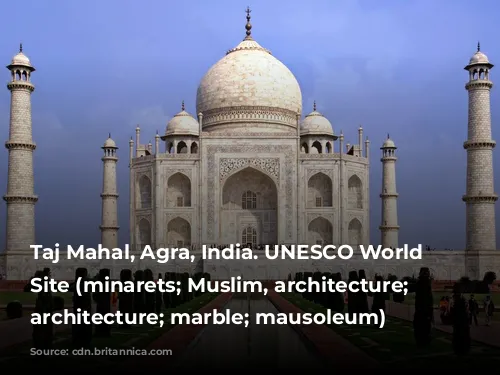
A Palace Replaced: From Nero’s Golden House to the Colosseum
The Colosseum’s location holds symbolic significance, as it was built on the grounds of Nero’s Golden House, an ostentatious palace known for its luxurious excesses. The artificial lake that was the focal point of Nero’s palace complex was drained, and the Colosseum was constructed in its place. This decision was as much symbolic as practical. Vespasian, a humble emperor who ascended to power through unconventional means, chose to replace the tyrannical emperor’s private lake with a public amphitheater, a symbol of his commitment to the Roman people.
This paragraph explains the Colosseum’s location and its symbolism, highlighting its connection to Nero’s Golden House and Vespasian’s vision for a public space.

A Symphony of Stone and Engineering: The Colosseum’s Design
Unlike earlier amphitheaters, which relied on convenient hillsides for support, the Colosseum was designed as a freestanding structure, constructed from stone and concrete. Its complex system of barrel vaults and groin vaults allowed it to span vast distances, measuring 620 by 513 feet (189 by 156 meters). The Colosseum’s architectural design is a masterpiece of Roman engineering, featuring three tiers of arcades framed by engaged columns in the Doric, Ionic, and Corinthian orders. This rising arrangement of columns became a defining feature of Renaissance architecture, known as the assemblage of orders.
This paragraph examines the Colosseum’s structural design, highlighting its innovative use of materials and its influence on later architectural movements.
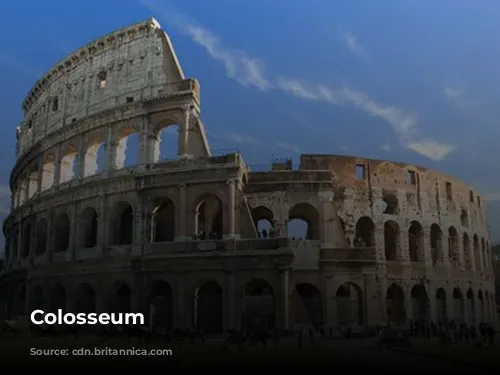
Protecting the Audience: The Colosseum’s Canopy
The Colosseum’s design incorporated innovative features to protect spectators from the elements. A massive retractable velarium, or awning, was used to shield audiences from the sun’s glare. Supporting masts were extended from corbels built into the Colosseum’s top story, requiring hundreds of Roman sailors to manipulate the rigging that extended and retracted the velarium.
This paragraph focuses on the Colosseum’s canopy, explaining its functionality and the intricate process of its operation.
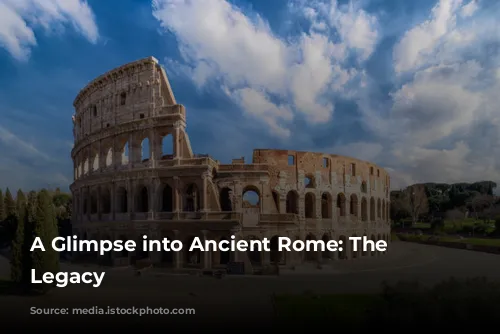
Arena of Blood and Spectacle: The Colosseum’s Events
The Colosseum was a stage for a myriad of brutal and spectacular events. Thousands of hand-to-hand combats between gladiators, contests between men and animals, and large-scale battles, including mock naval engagements, were held within the arena’s walls. The Colosseum’s legacy, however, is tinged with controversy as its use as a venue for gladiatorial combat and other spectacles raises questions about the ethics of ancient Roman entertainment. The Colosseum’s role in the martyrdom of early Christians remains a subject of debate, with some historians believing it was used for this purpose, while others disagree.
This paragraph explores the various events that took place within the Colosseum, acknowledging the ethical complexities surrounding these spectacles.

From Glory to Neglect: The Colosseum’s Later Years
During the Middle Ages, the Colosseum underwent a transformation. It was used as a church, then as a fortress by two prominent Roman families, the Frangipane and the Annibaldi. The Colosseum’s grandeur, however, was gradually eroded by lightning strikes, earthquakes, and vandalism. The Colosseum was stripped of its marble seats and decorative materials, and for over 1,000 years, it was treated as little more than a quarry.
This paragraph describes the Colosseum’s fate during the Middle Ages, highlighting its decline and the period of neglect it endured.

A Resurgence: The Colosseum’s Preservation and Rebirth
The Colosseum’s restoration began in earnest in the 19th century, with notable efforts led by Pope Pius VIII. A major restoration project was undertaken in the 1990s, returning the monument to its former glory. Today, the Colosseum is one of Rome’s most popular tourist attractions, receiving close to seven million visitors annually. The Colosseum’s enduring legacy is evident in its ability to captivate generations of visitors with its history, architectural grandeur, and enduring power. Changing exhibitions are regularly mounted within the Colosseum, offering visitors glimpses into the culture of ancient Rome.
This paragraph concludes with a discussion of the Colosseum’s modern-day status, highlighting its ongoing preservation efforts, popularity with tourists, and role in showcasing the Roman world.
